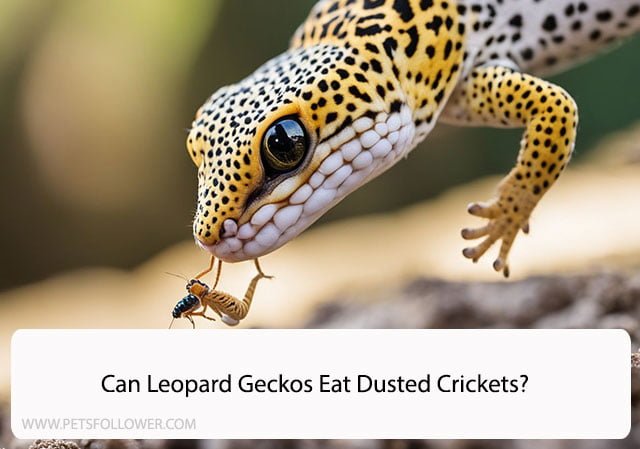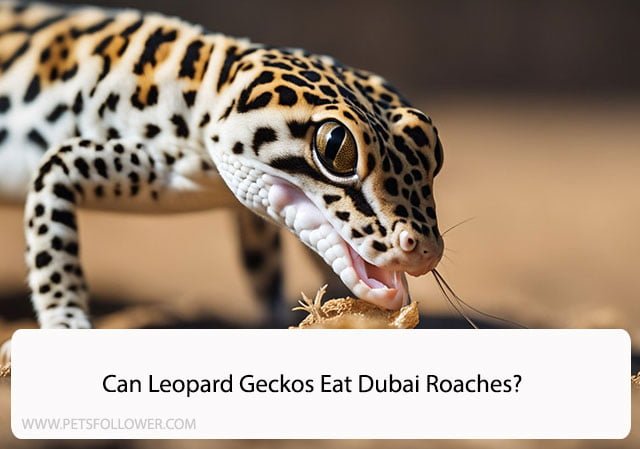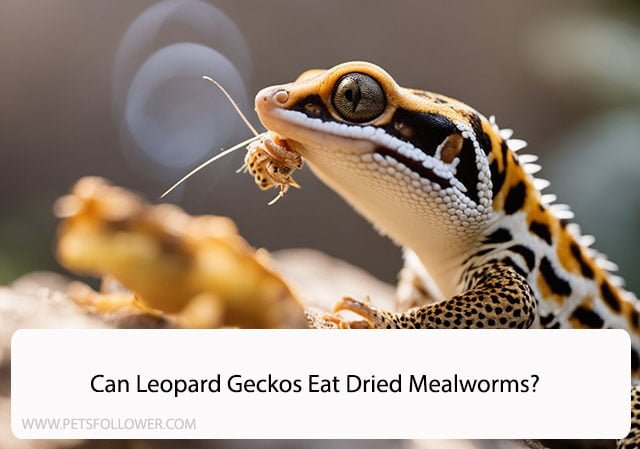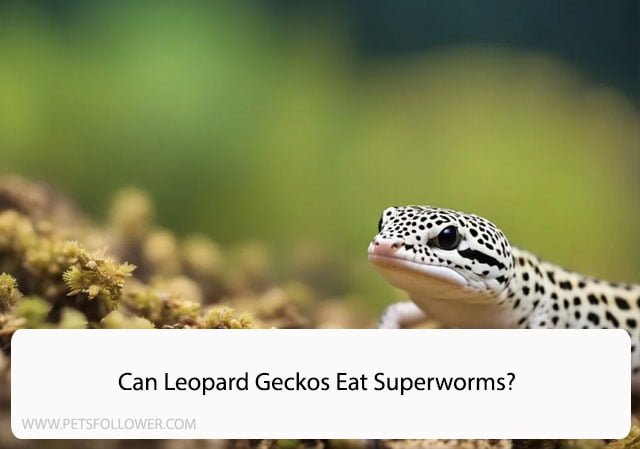Leopard geckos are popular pets due to their docile nature and unique appearance. As with any pet, it’s important to ensure they are receiving proper nutrition. One common question among leopard gecko owners is whether or not they can feed their gecko dead crickets.
The short answer is yes, leopard geckos can eat dead crickets. In fact, some owners prefer to feed their geckos pre-killed insects to avoid the hassle of dealing with live crickets. However, it’s important to note that feeding your gecko a diet solely consisting of dead crickets is not recommended, as they lack the nutritional value of live insects. In this article, we’ll explore the benefits and drawbacks of feeding your leopard gecko dead crickets, as well as alternative food options to ensure your gecko is receiving a balanced diet.
Leopard Gecko Diet Basics
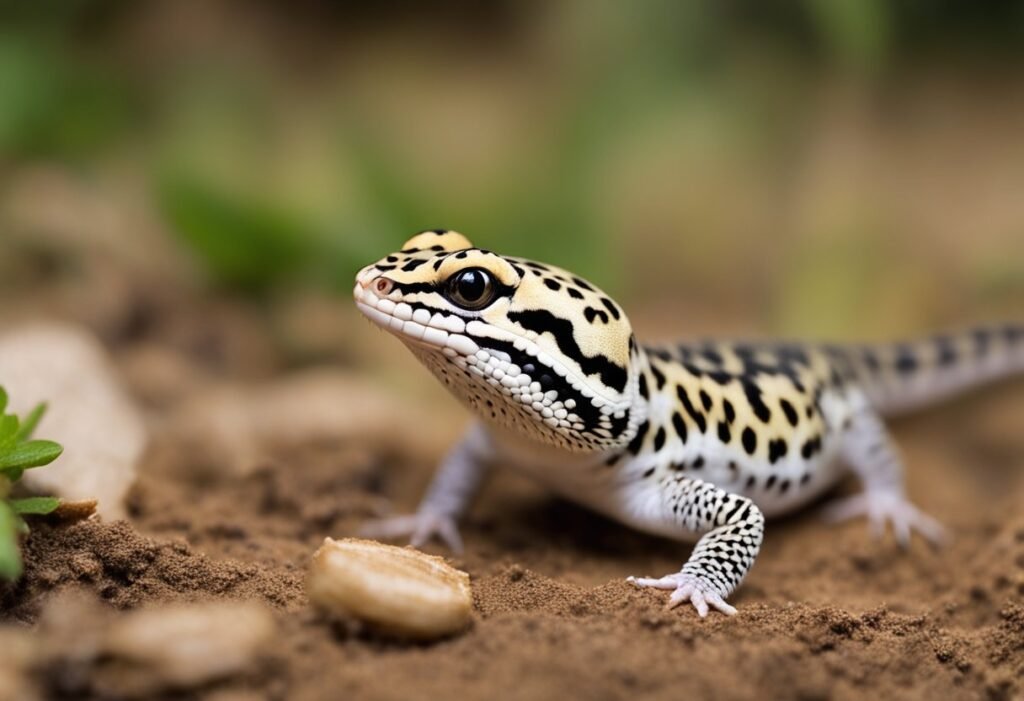
Leopard geckos are insectivores, which means they eat insects. In the wild, they eat a variety of insects, including crickets, mealworms, and roaches. As pets, they require a balanced diet to ensure they receive all the necessary nutrients to maintain optimal health.
When it comes to feeding leopard geckos, it’s important to remember that they should only be fed live insects. Dead insects, including crickets, can pose a risk of impaction, which can be fatal to your pet.
In addition to live insects, leopard geckos require a source of calcium and other essential vitamins and minerals. This can be achieved by dusting their food with a calcium and vitamin supplement powder.
It’s also important to ensure that the size of the insects you feed your leopard gecko is appropriate for their size. Feeding them insects that are too large can lead to digestive issues and other health problems.
Overall, a balanced diet consisting of live insects and a calcium and vitamin supplement powder is essential for the health and well-being of your leopard gecko.
Safety Considerations for Feeding Dead Crickets
When it comes to feeding leopard geckos, it is important to consider the safety of the food we offer them. While dead crickets may seem like a convenient option, there are a few things to keep in mind before feeding them to your gecko.
Firstly, it is important to ensure that the dead crickets are fresh and have not been sitting around for too long. Dead crickets that have been left out for too long can harbor bacteria and other harmful pathogens that can make your gecko sick.
Secondly, it is important to ensure that the dead crickets have not been treated with any pesticides or chemicals. These chemicals can be harmful to your gecko and can cause serious health problems.
Lastly, it is important to ensure that the dead crickets are an appropriate size for your gecko. Feeding your gecko crickets that are too large can cause digestive issues and can even lead to impaction.
In summary, while feeding dead crickets to your leopard gecko can be convenient, it is important to consider the safety of the food you offer them. Make sure the crickets are fresh, free of pesticides, and an appropriate size for your gecko. By taking these precautions, you can ensure that your gecko stays healthy and happy.
Nutritional Value of Dead Crickets
When it comes to feeding leopard geckos, crickets are a popular choice due to their high nutritional value. However, many pet owners wonder if dead crickets are a suitable option for their geckos.
Dead crickets can still provide some nutritional value, but it’s important to note that they may be lacking in certain nutrients compared to live crickets. For example, live crickets are a good source of hydration for geckos, whereas dead crickets may not provide the same level of moisture.
In terms of protein and fat content, dead crickets are comparable to live crickets. Both contain high levels of protein, which is essential for a leopard gecko’s growth and overall health. Additionally, the fat content in crickets can provide a source of energy for geckos.
One potential issue with feeding dead crickets is that they may not be as appealing to geckos as live crickets. Geckos are natural hunters and may prefer the challenge of catching live prey. However, if your gecko is accustomed to eating dead crickets, there should be no problem with continuing to feed them this way.
Overall, while live crickets may be the preferred choice, dead crickets can still provide nutritional value for leopard geckos. It’s important to ensure that your gecko is receiving a balanced diet that includes a variety of food options to meet all of their nutritional needs.
How to Safely Offer Dead Crickets to Leopard Geckos
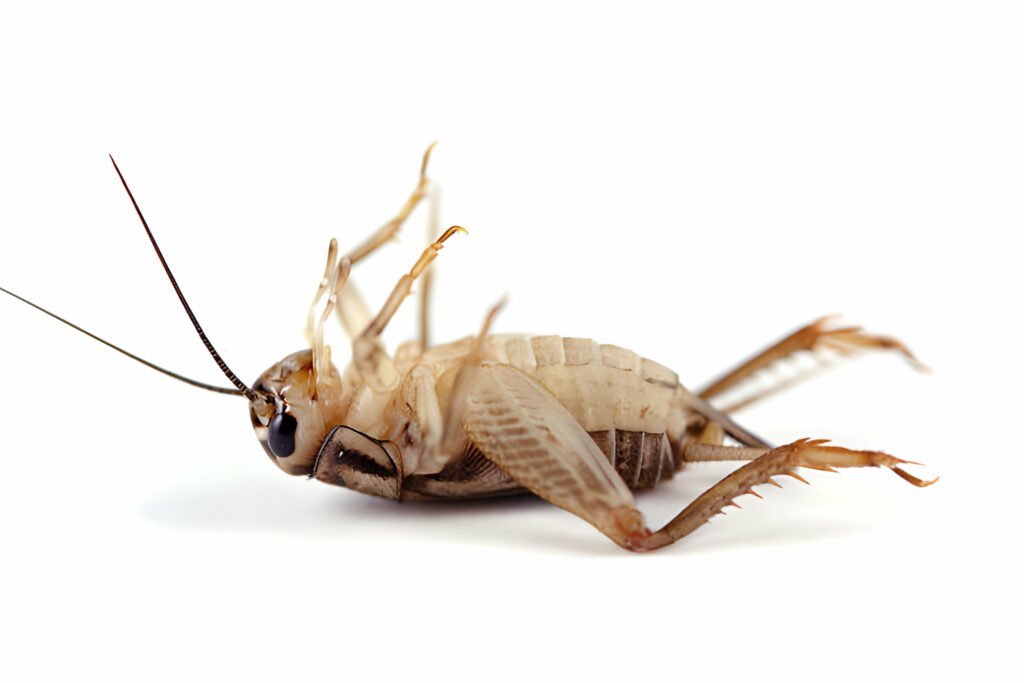
When it comes to feeding leopard geckos, live insects are the preferred option. However, in some situations, offering dead insects can be a convenient alternative. Here are some tips on how to safely offer dead crickets to leopard geckos.
1. Quality of the Crickets
The first thing to consider when offering dead crickets is the quality of the insects. It is important to ensure that the crickets are fresh and not spoiled. Spoiled crickets can cause health issues for your gecko. Additionally, make sure that the crickets are not coated with any chemicals or pesticides, as this can also be harmful to your gecko.
2. Preparation of the Crickets
Before offering dead crickets to your leopard gecko, it is important to prepare them properly. This includes removing any uneaten portions of the cricket, such as the head or legs, as these can be difficult for your gecko to digest. You can also coat the cricket with calcium powder to ensure that your gecko is receiving the necessary nutrients.
3. Offer in Moderation
While it is safe to offer dead crickets to your leopard gecko, it is important to do so in moderation. Dead crickets should not make up the majority of your gecko’s diet, as live insects are still the preferred option. Additionally, offering too many dead crickets can lead to constipation or other digestive issues for your gecko.
In conclusion, while live insects are the preferred option for feeding leopard geckos, offering dead crickets can be a convenient alternative when necessary. By ensuring the quality of the crickets, preparing them properly, and offering them in moderation, you can safely incorporate dead crickets into your gecko’s diet.
Alternatives to Dead Crickets in Leopard Gecko Diet
When it comes to feeding leopard geckos, live insects are the best option. However, if live insects are not available, there are alternatives to dead crickets that can be included in their diet.
Mealworms
Mealworms are a popular alternative to crickets. They are easy to find and can be bought in bulk. They are also high in protein and fat, making them a great source of nutrition for leopard geckos. However, it is important to note that mealworms should not be the only food in their diet as they have a high ratio of phosphorus to calcium, which can lead to health problems.
Waxworms
Waxworms are another alternative to crickets. They are high in fat and can be used as a treat or supplement to a leopard gecko’s diet. However, they should not be fed regularly as they are not nutritionally balanced.
Dubia Roaches
Dubia roaches are a great alternative to crickets as they are high in protein and low in fat. They are also easy to digest and do not have an exoskeleton, making them easier for leopard geckos to consume. They are also less likely to carry parasites or diseases than crickets.
Silkworms
Silkworms are another alternative to crickets. They are high in protein and low in fat, making them a great source of nutrition for leopard geckos. They are also easy to digest and have a soft exoskeleton, making them easier for leopard geckos to consume.
In summary, while live insects are the best option for leopard geckos, there are alternatives to dead crickets that can be included in their diet. Mealworms, waxworms, dubia roaches, and silkworms are all great options to consider. However, it is important to ensure that their diet is varied and balanced to ensure their overall health and wellbeing.
Frequently Asked Questions
Is it safe for leopard geckos to consume freeze-dried crickets?
Yes, freeze-dried crickets are safe for leopard geckos to consume. They are a convenient alternative to live crickets, and they have a long shelf life. However, it is important to ensure that your leopard gecko has access to fresh water at all times, especially when consuming freeze-dried crickets.
What alternative foods can I offer my leopard gecko apart from insects?
Leopard geckos are primarily insectivores, but they can also be fed mealworms, waxworms, silkworms, and superworms. It is important to ensure that the food is appropriately sized for your leopard gecko and that it is gut-loaded (fed nutritious foods) before being offered to your pet.
Are there any risks associated with feeding leopard geckos dead mealworms?
Dead mealworms can pose a risk to leopard geckos if they are not consumed immediately. Dead insects can harbor bacteria and fungi that can cause illness or infection if ingested. It is recommended to remove any uneaten insects from your leopard gecko’s enclosure.
How long can leopard geckos survive without food?
Leopard geckos can survive for several weeks without food, but it is not recommended to withhold food for extended periods of time. A healthy leopard gecko should be fed every 2-3 days.
Can leopard geckos be given vegetables, and if so, which ones?
Leopard geckos are primarily insectivores and do not require vegetables in their diet. However, some owners have reported success with offering small amounts of mashed fruits or vegetables as a treat. It is important to research which fruits and vegetables are safe for leopard geckos before offering them.
Is it advisable to feed leopard geckos with crickets caught in the wild?
No, it is not advisable to feed leopard geckos with crickets caught in the wild. Wild-caught insects can carry parasites or diseases that can be harmful to your pet. It is recommended to purchase insects from a reputable source or to breed your own insects at home.


